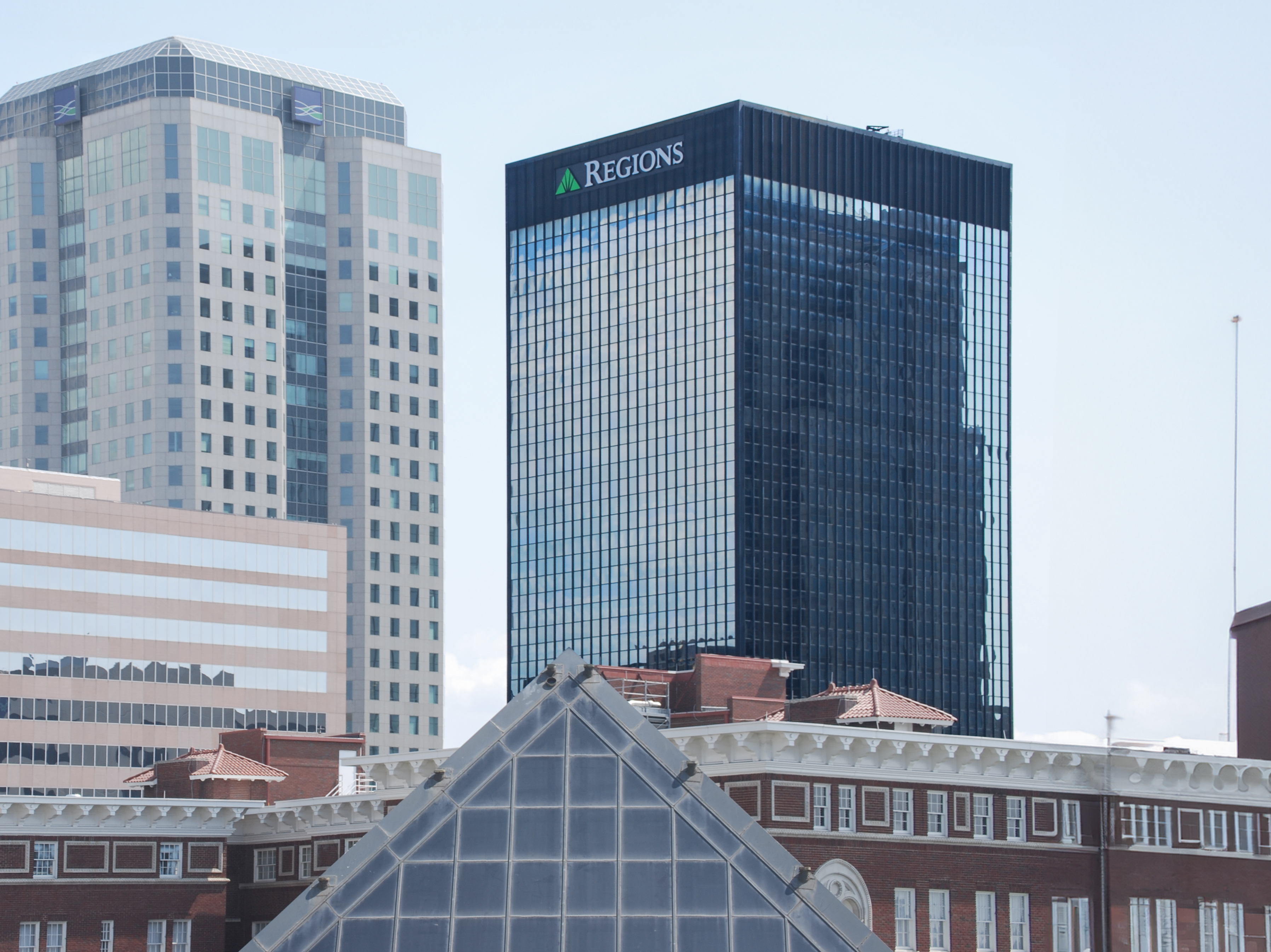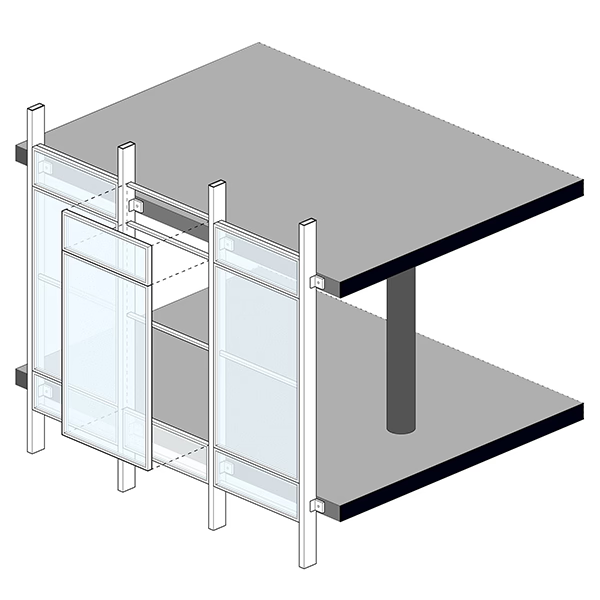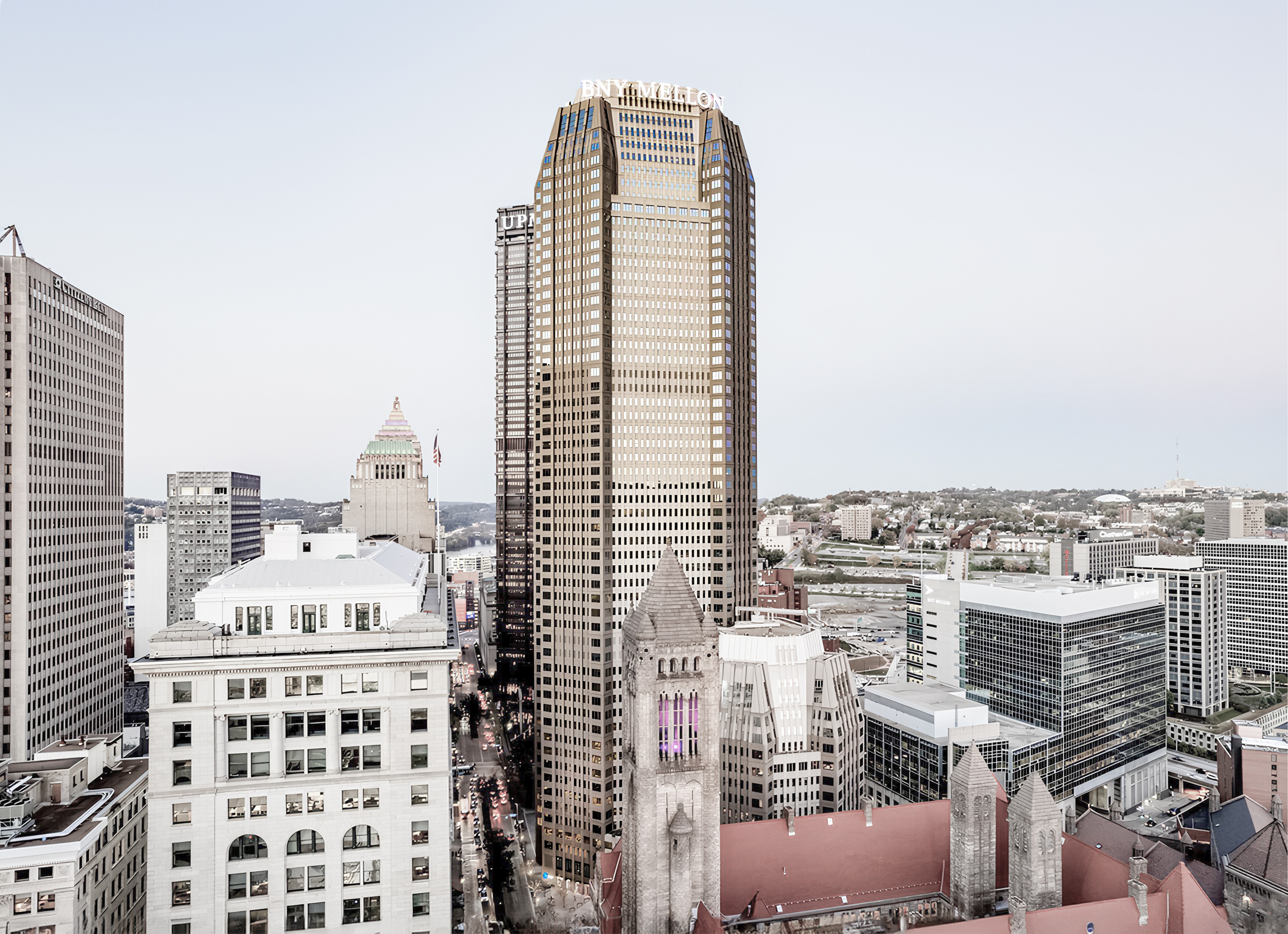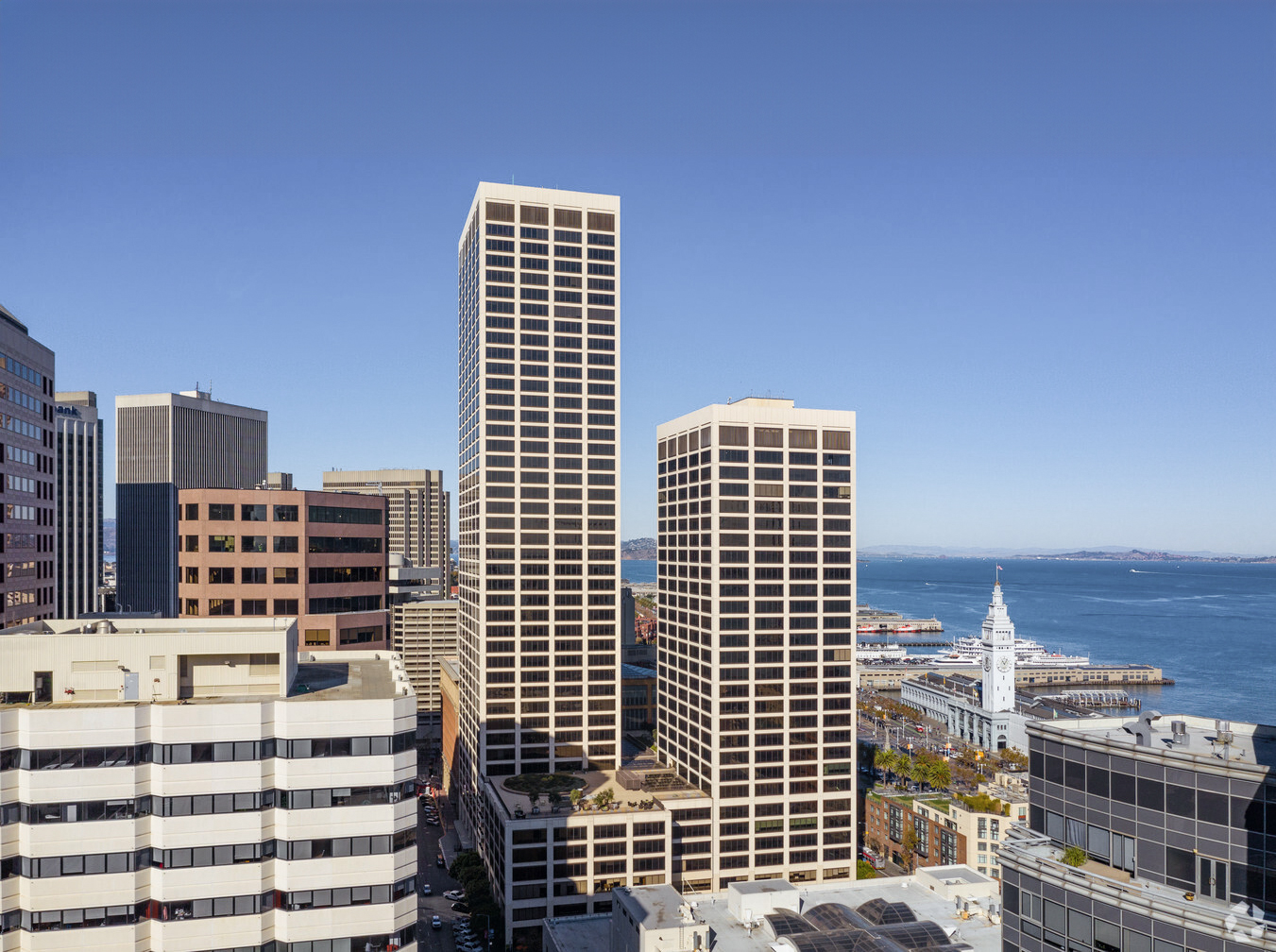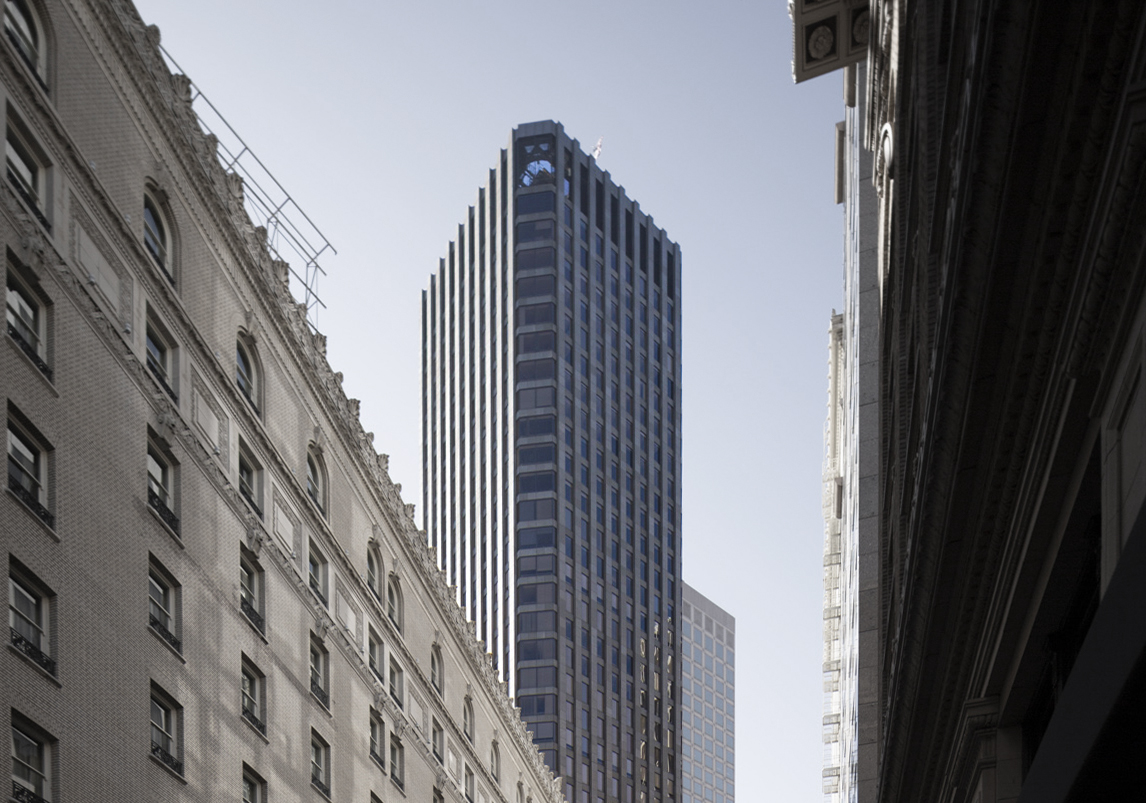The Regions Center is an International Style skyscraper designed by Welton Becket & Associates, in association with Charles H. McCauley Associates, and built between 1968 and 1972 in Birmingham, AL.
Regions Center is not the only name you might know this building by though. It is common for companies to want to attach their names to iconic buildings when they move in, or for the general public to come up with nicknames, and this one is no exception. The building has changed names several times over the years, and is also known as:
- First National Bank-Southern Natural Gas Building between 1972 and 1980.
- AmSouth-Sonat Tower between 1980 and 2001.
- AmSouth Center between 2002 and 2006.
Its precise street address is 1960 5th Avenue North, Birmingham, AL. You can also find it on the map here.
The building underwent a major restoration in 2016. The architect commissioned to undertake this restoration was LEC.
